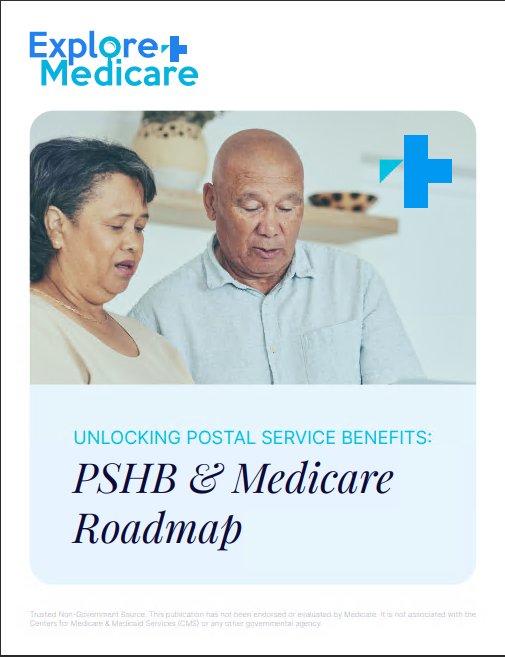Key Takeaways:
-
Understanding the basics of Medicare can help you avoid unexpected costs and coverage gaps.
-
Planning ahead and making informed choices ensures you get the most out of your Medicare benefits.
Get Ahead of Medicare Basics Before It’s Too Late
Medicare is a lifeline for millions, but it can also be a minefield of hidden costs and tricky rules. If you’re new to Medicare or looking for ways to optimize your coverage, it’s crucial to know what to expect. A little preparation now can save you from frustrating surprises later. Here’s what you need to know to protect your healthcare and your wallet.
Know Your Enrollment Deadlines—They Matter!
Medicare enrollment isn’t automatic for everyone, and missing key deadlines can lead to penalties or coverage delays. Here are the main periods to be aware of:
Initial Enrollment Period (IEP)
-
Starts three months before your 65th birthday, includes your birthday month, and lasts three months after.
-
If you don’t sign up during this window and don’t qualify for automatic enrollment, you may face penalties.
General Enrollment Period (GEP)
-
Runs from January 1 to March 31 each year.
-
If you missed your IEP, this is your chance to sign up, but coverage won’t begin until July 1, and late penalties may apply.
Special Enrollment Periods (SEP)
-
Certain life events, like losing employer coverage or moving to a new service area, may allow you to enroll outside of standard periods without penalties.
Annual Enrollment Period (AEP)
-
From October 15 to December 7, you can switch or adjust plans for the next year.
Choosing the Right Medicare Plan: Avoid Costly Mistakes
Not all Medicare coverage is the same, and picking the wrong plan can cost you more in the long run. Here’s a breakdown:
Original Medicare (Parts A & B)
-
Part A (Hospital Insurance) covers inpatient care but has a deductible and coinsurance costs.
-
Part B (Medical Insurance) covers doctor visits, outpatient care, and preventive services, but comes with a monthly premium and deductible.
Prescription Drug Coverage (Part D)
-
Helps cover medication costs, but plans vary widely in covered drugs, premiums, and deductibles.
-
In 2025, once your out-of-pocket costs hit $2,000, your plan covers 100% of your drug expenses.
Medicare Advantage (Part C)
-
Offers additional benefits, but coverage, out-of-pocket costs, and networks differ between plans.
-
Plans may include vision, dental, and hearing benefits but could limit provider choices.
Don’t Get Caught Off Guard by Medicare Costs
Medicare isn’t free, and some costs can sneak up on you if you’re not prepared. Here are key expenses to watch:
Premiums, Deductibles, and Coinsurance
-
Part A: Most people pay no premium, but the 2025 deductible is $1,676 per benefit period.
-
Part B: The monthly premium is $185, with an annual deductible of $257.
-
Part D: Plans set their own premiums, with a maximum deductible of $590 in 2025.
IRMAA (Income-Related Monthly Adjustment Amount)
-
Higher-income beneficiaries pay higher Part B and Part D premiums.
-
For 2025, IRMAA kicks in for individuals earning over $106,000 and couples earning over $212,000.
Medicare Out-of-Pocket Limits
-
There is no out-of-pocket maximum for Original Medicare, which means you could face high medical costs unless you have supplemental coverage.
-
Medicare Advantage plans set an annual out-of-pocket limit ($9,350 in-network for 2025).
Take Advantage of Preventive Services—They’re Covered!
Medicare provides many preventive services at no extra cost, so don’t miss out:
-
Annual wellness visits
-
Flu shots and other vaccinations
-
Screenings for cancer, diabetes, and heart disease
-
Bone density tests
These services help catch potential health problems early and can save you money on future treatments.
How to Avoid Medicare Late Penalties
Penalties can follow you for life, adding unnecessary costs to your monthly premiums. Here’s how to avoid them:
Part B Late Enrollment Penalty
-
If you don’t enroll when first eligible, your premium increases by 10% for every full year you delay.
-
This penalty lasts for as long as you have Part B.
Part D Late Enrollment Penalty
-
If you go 63 days or more without creditable prescription drug coverage, a penalty is added to your premium permanently.
-
Enrolling in a Part D plan when first eligible helps avoid this added cost.
Planning for Medicare and Employer Coverage
Still working past 65? You may have options to delay Medicare enrollment without penalties if your employer coverage is creditable. Check with your HR department to ensure your plan meets Medicare standards.
Don’t Overlook Supplemental Coverage
Original Medicare leaves gaps in coverage, and without additional insurance, you could face high out-of-pocket costs. Some common options include:
-
Employer or retiree coverage
-
Medicare Supplement Insurance (Medigap)
-
Medicare Advantage (Part C) plans with out-of-pocket limits
Stay on Top of Annual Medicare Changes
Medicare rules and costs change yearly. Staying informed helps you adjust your coverage as needed. Watch for updates like:
-
Premium increases
-
Changes in covered services
-
Modifications to out-of-pocket costs
The Best Time to Review Your Medicare Plan
The best time to assess your Medicare coverage is during the Annual Enrollment Period (October 15 – December 7). Ask yourself:
-
Did my healthcare needs change?
-
Did my plan increase costs or change benefits?
-
Are my doctors and prescriptions still covered?
If your current plan no longer fits, switch to one that better suits your needs.
Making Medicare Work for You
Medicare is complex, but understanding the basics helps you make better decisions. Keep track of your enrollment periods, choose the right plan for your needs, and stay aware of yearly changes to avoid unexpected expenses. A little planning now means fewer surprises and a smoother healthcare experience in the future.









